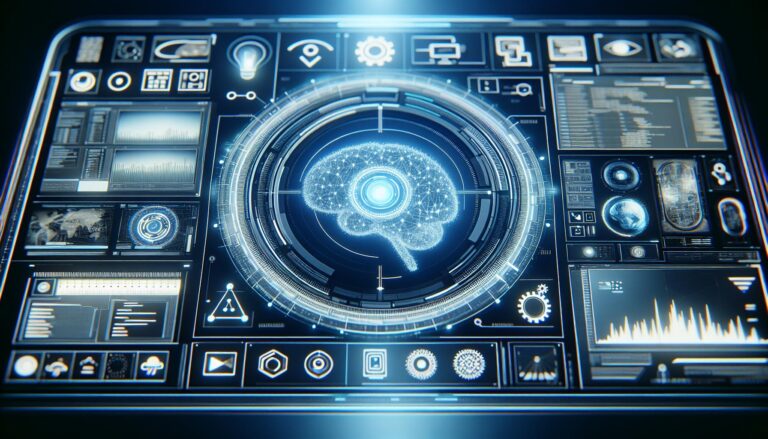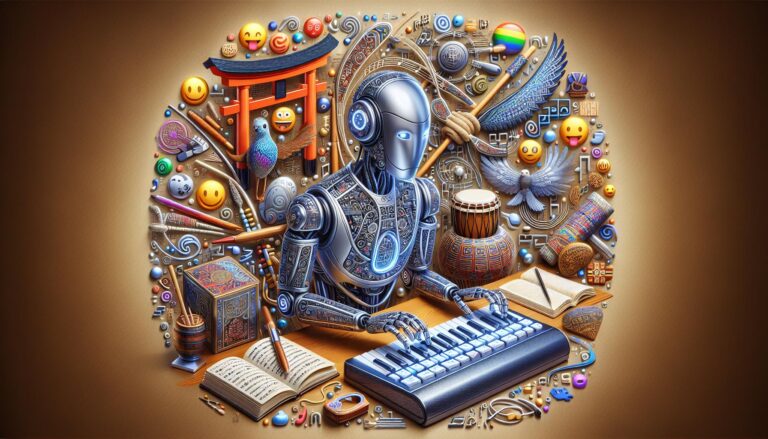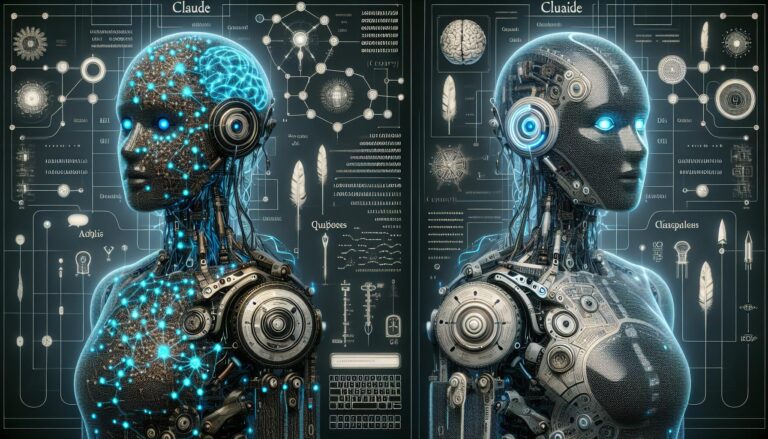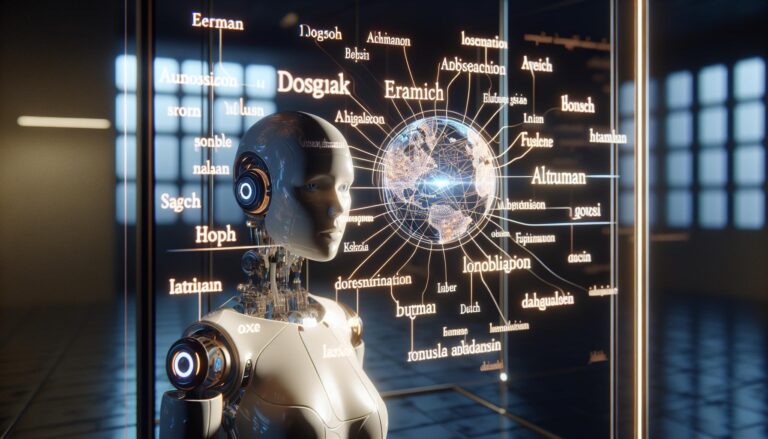Mastering Chatbot Advancements through GPT Training
Ever wondered how chatbots like Siri or Alexa get their knack for conversation? They’re trained using models like GPT (Generative Pretrained Transformer). I’m here to unravel the mystery behind chat GPT training.
In the world of AI, GPT training is a game-changer. It’s the powerhouse that gives our chatbots the ability to understand and generate human-like text. But how does it work? That’s what we’ll explore together.
PowerBrain AI Chat App powered by ChatGPT & GPT-4
Download iOS: AI Chat
Download Android: AI Chat
Read more on our post about ChatGPT Apps & AI Chat App
Key Takeaways
- GPT (Generative Pretrained Transformer) training is a critical factor in modern chatbot development. It equips chatbots with the ability to understand context and create coherent, human-like responses.
- GPT boosts the quality of AI-human interaction. It can weave complex sentences and generate engaging dialogues, significantly improving customer experience.
- Like a learning child, GPT models improve with every interaction. These experiences enhance their ability to learn and adapt, refining their conversational skills over time.
- The GPT models function on transformer-based artificial neural networks, efficiently processing sequence data and comprehending sequence orders for enhanced NLP tasks. Their ability to ‘decode’ data and assign probabilities to potential next words in a conversation has revolutionized AI interactions.
- Training data is crucial for effective chat GPT models. These models learn from a vast amount of internet text data, which must be carefully selected and diverse to ensure accurate and unbiased responses.
- The adoption of GPT-powered chatbots in businesses is a growing trend providing higher customer satisfaction and enhanced efficiencies. However, challenges like data privacy, bias, and ethical issues need to be considered and addressed.
- Read more: Chat GPT vs Jasper & how to make Chatgpt undetectable.
Importance of GPT Training in Chatbot Development
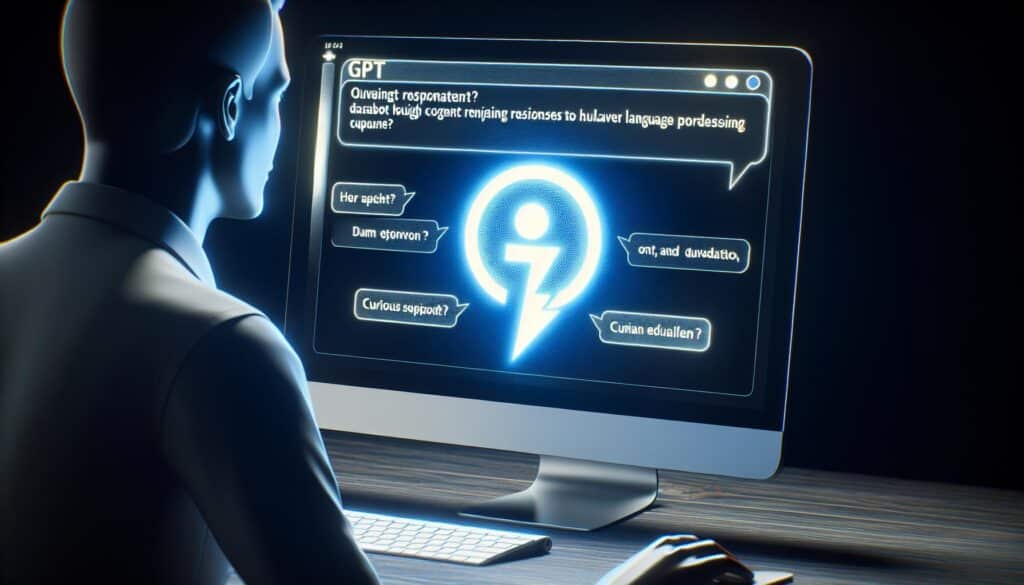
Let’s face it, we’ve come a long way from the early, disjointed chatbot interactions. Today’s chatbots, powered by GPT models, can comprehend complex queries, provide comprehensive answers, and maintain a coherent and engaging conversation. The key to this leap is the implementation of GPT training in chatbot development.
Comprehension is at the heart of any conversation. Without understanding the context or the intent behind a specific query, a chatbot’s conversation with a human might as well be gibberish. GPT training equips chatbots with the ability to understand context and, in turn, generate responses that accurately reflect that understanding. It’s like giving them their own linguistic compass, guiding them through the maze of human communication.
It’s not just about understanding, though. Now, let’s consider the quality of interaction which has been significantly improved due to GPT models. These models work like seasoned authors, who can weave words together to form clear and meaningful sentences that align with the conversation’s context. The development of such chatbots, trained using GPT models, has transformed customer experiences into much more interactive, engaging, and dynamic dialogues instead of rather mundane, robotic exchanges.
The beauty of the GPT model is that it continues to learn and evolve with each interaction. Think of it like a child learning to talk: With every conversation, the child picks up nuances, learns about context and improves their speech. Similarly, the more GPT-trained chatbots interact, the more they learn, and the better their conversational skills get.
In essence, GPT training is more than just a technological leap. It’s a game-changer that’s transforming how we create, interact with, and benefit from chatbots every day. A deeper look at this transformative tech shows that it’s unarguably leading the pack in the present AI-driven conversational space. From here, it can only get better – there’s no end to the journey of improvement and refinement.
There’s a lot more to uncover in the versatile world of GPT in AI. Stay tuned as we navigate deeper into the complexities of this technology and how it’s shaping the future of chatbots.
Understanding the Working of GPT Models
To comprehend the magnitude of GPT impact on chatbot development, it’s essential to grasp how these models function. Like the human brain learning from past experiences, GPT models derive knowledge from a vast expanse of internet text data. This availability of a comprehensive learning medium is the cornerstone of their remarkable ability to comprehend context and produce engaging responses.
Fundamentally, GPT models are a type of transformer-based artificial neural network. It’s designed to process sequence data, taking into account the order of input, making it efficient in NLP tasks. But what really powers its performance is its architecture, which is composed of layers of transformer blocks. These blocks work in harmony to process and generate responses, contributing to the model’s profound contextual understanding ability.
Delving a notch deeper, the GPT models rely on a structure known as ‘transformer decoders’. These structures help the model to ‘decode’ the data, recognizing patterns, and converting them into human-like textual responses. The more data a GPT model can access and process – the smarter it gets.
Speaking in technical terms, this understanding ability comes from the model’s capacity to assign probabilities to potential next words in a sentence. For example, given the sentence, ‘I’d like a cup of…’, the model will predict ‘tea’ or ‘coffee’ as probable next words, based on the patterns it has learned. It’s like when we, humans, play the word completion game – GPT does the same, but at a highly scaled, data-driven level.
Continuing our journey into the world of GPT and its impact on chatbots, our next stop will be the various challenges encountered during GPT training. After all, every technological advancement comes with its share of hurdles, and GPT models are no exception. From data privacy issues to the risk of generating inappropriate content – we’ll delve into these challenges and more in our upcoming sections.
Training Data for Chat GPT Models
In our deep-dive into the world of chat GPT models, it’s crucial we discuss the training data. This data is the foundation on which these AI models are built. They function by learning from a vast amount of information sourced from the internet, which we refer to as ‘training data’.
This data isn’t just any random text found online. It’s carefully selected and strategically fed into the model to ensure it covers a wide range of topics, languages, and domains. However, this isn’t foolproof. The quality and diversity of the training data are critical. Low-quality data or lack of proper diversity can result in a model that isn’t fully equipped to generate accurate, appropriate, and unbiased responses.
The source of this data is a hot topic in the AI industry. While it’s impossible for us to determine the exact origins of each individual data element, we can say it is an amalgamation of countless different resources. This can include everything from books, articles, and encyclopedias to websites, forums, and social media platforms. The key factor here is that the data must be publicly available and not infringe on private and confidential information.
To elaborate on the idea of data collection, take a look at the following markdown table:
| Type of Data | Description |
|---|---|
| Books | Classical and contemporary literature, encyclopedias, etc. |
| Articles | Magazine articles, newspaper articles, scholarly papers, etc. |
| Forums | Public forum discussions ranging from multiple topics |
| Websites | A variety of websites from different domains |
| Social Media Platforms | Public posts from platforms like Twitter, Facebook, etc. |
Training a chat GPT model isn’t a one-time event. It is an ongoing process that requires constant updates and upgrades. This is necessary to keep the model relevant and capable of understanding the ever-evolving language patterns and internet trends. The raw data is refined and processed to make it usable for training the AI models. As a rule of thumb, the more diverse and comprehensive the data, the better the model’s performance.
In the upcoming dismantling of the challenges posed by training data, I’ll be exploring its implications on privacy, bias, and ethical considerations.
Enhancing Chatbot Conversations with GPT
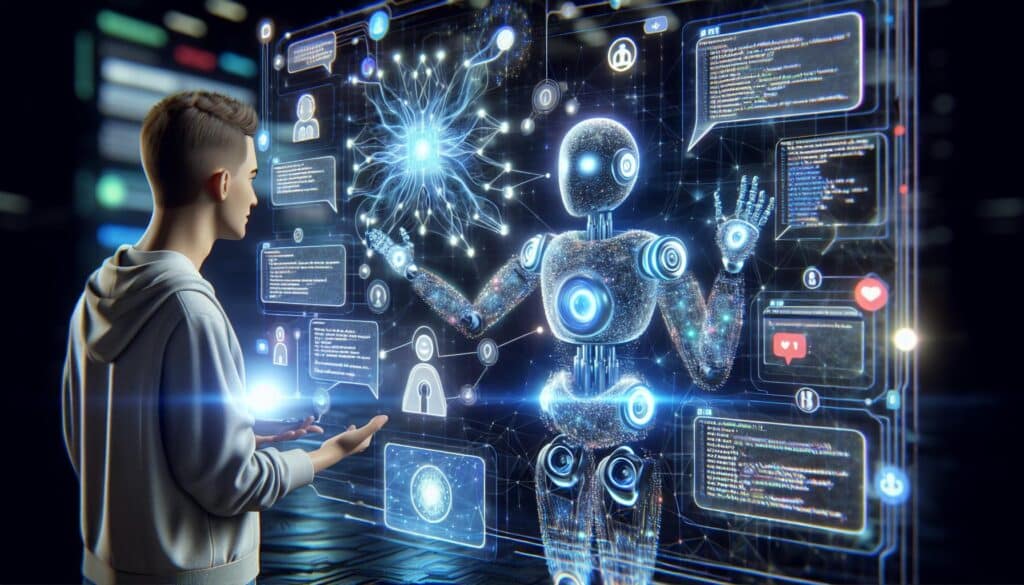
There’s a wave of innovation sweeping across AI and, one arena that’s gaining massive traction is improving chatbot exchanges using GPT models. For years, the inherent limitations in standard pattern-based models left users with robotic, disjointed interactions. But GPT’s technology breaks down these barriers, allowing chatbots to deliver more coherent, context-aware responses.
The key to GPT’s prowess lies in transformers, a type of model architecture that enhances the model’s understanding of sentence context. Unlike previous models, transformers allow GPT to comprehend an entire conversation up to a point. This crucial feature enables more natural flowing discussions with users.
Diving deeper, GPT models are given the ability to “learn” from vast amounts of diverse training data. They absorb everything from academic texts to the latest Twitter banter, leading to multi-faceted and nuanced communication abilities. If a chatbot is a car, then the training data is the high-octane fuel that powers it.
I’ve observed a growing trend with businesses adopting GPT-powered chatbots for their customer service. This isn’t surprising given the evident enhancements, which see customers enjoying dynamic, empathetic, and fluid communications.
| Business Adoption of GPT-Powered Chatbots |
|---|
| Rapidly growing trend |
| Higher customer satisfaction |
| Enhanced efficiencies |
However, the task is far from done. There are layers of complexities and challenges we’re yet to wholly reckon with. Upcoming sections will focus on some of these tough nuts like privacy concerns, bias, and ethical issues – to ensure we never lose sight of our end goal: creating chatbots that engage users in ever more meaningful ways.
Conclusion
I’ve taken you on a journey through the world of GPT-powered chatbots. We’ve seen how they’re transforming conversations, thanks to the magic of transformers and diverse training data. They’re like high-octane fuel, powering more natural, context-aware interactions. We’ve also looked at how businesses are leveraging these chatbots, leading to happier customers and streamlined operations. But it’s not all smooth sailing – we must tackle challenges like privacy, bias, and ethics to ensure meaningful user engagement. As we continue to advance in this arena, let’s remember the power of GPT training in shaping the future of chatbot technology.
What are GPT models in chatbot technology?
GPT (Generative Pre-training Transformer) models are artificial intelligence models used in chatbots. They improve conversation quality by providing more coherent, context-aware responses.
How do transformers in GPT models enhance chatbot interaction?
Transformers within GPT models enhance understanding of sentence context. This helps in providing more natural and accurate responses to user queries, thereby improving overall chatbot interaction.
Why is diverse training data important?
Diverse training data is pivotal in enhancing chatbot capabilities. It’s akin to high-octane fuel for a car, the more diverse the data, the better a chatbot performs in understanding and responding accurately to different scenarios.
How are GPT-powered chatbots benefiting businesses?
GPT-powered chatbots are increasingly adopted by businesses for customer service. These chatbots lead to higher customer satisfaction and improved operational efficiencies by providing quick, accurate, and 24/7 support.
What challenges lie ahead in the development of chatbots?
Major challenges in chatbot development include addressing privacy concerns, bias, and ethical issues. Ensuring meaningful user engagement while assuring user data protection and ethical responses is crucial for the success of chatbots.

